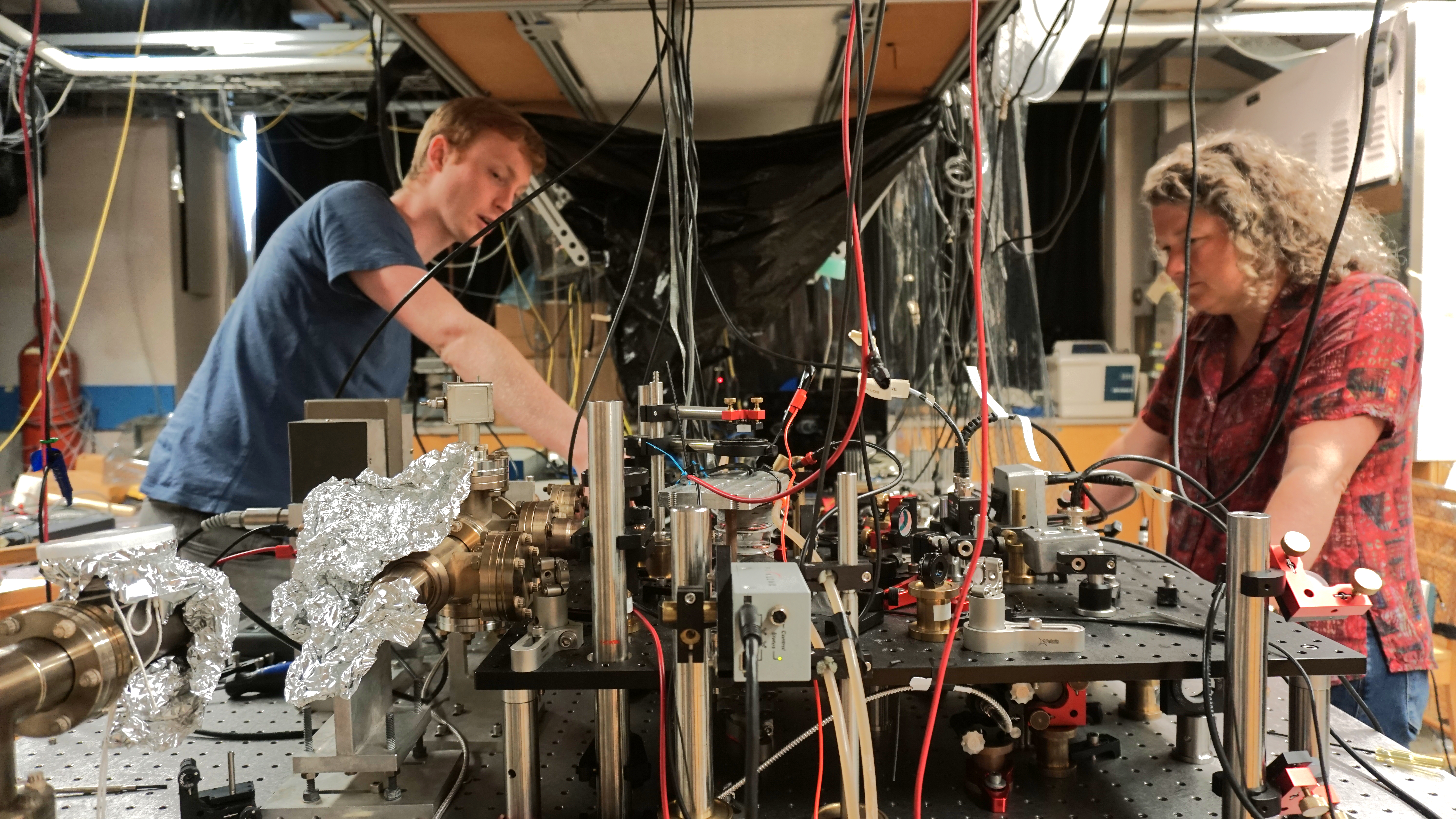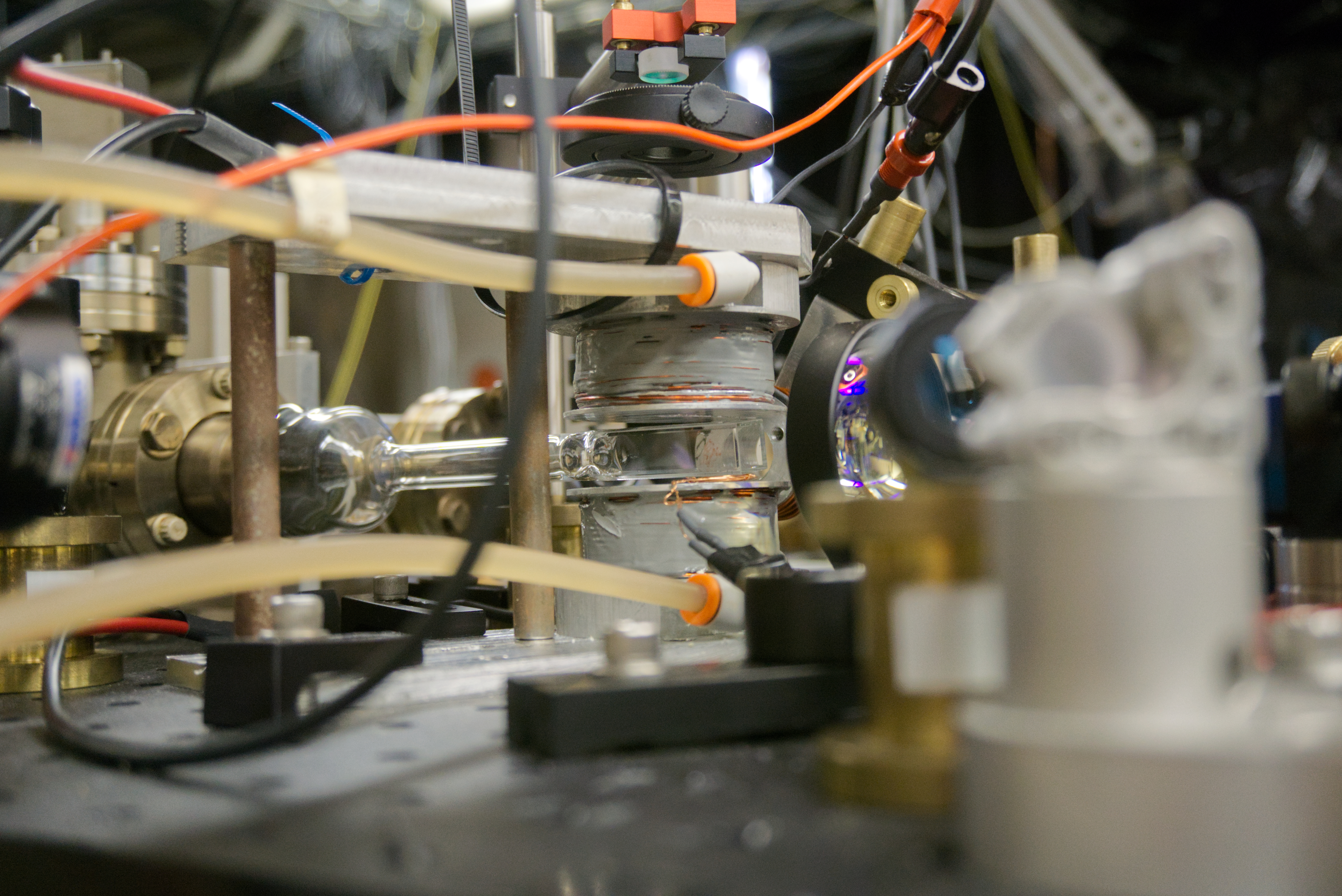Francium Silver
 Ultra-cold radioactive molecules present themselves as excellent candidates for fundamental symmetry tests in search of an eEDM.
One such molecule is Francium Silver (FrAg), which, given its properties such as an octopole deformation in francium, offers incredible enhancements in experimental sensitivity.
Forming this molecule in an ultra-cold state involves assembling the molecule out of Bose-Einstein condensates (BEC) of both francium and silver, which requires knowing the scattering length of both Fr and Ag.
Ultra-cold radioactive molecules present themselves as excellent candidates for fundamental symmetry tests in search of an eEDM.
One such molecule is Francium Silver (FrAg), which, given its properties such as an octopole deformation in francium, offers incredible enhancements in experimental sensitivity.
Forming this molecule in an ultra-cold state involves assembling the molecule out of Bose-Einstein condensates (BEC) of both francium and silver, which requires knowing the scattering length of both Fr and Ag.
 The Francium magneto-optical trap (MOT) at TRIUMF is able to trap up to 106 neutral Fr atoms as part of searches for atomic parity violations.
The goal of Radioactive Molecules is to use this trap in order to form francium dimers, using 2-photon photoassociation (2PA).
This technique uses a first photon to excite a neutral atom to a higher energy state, at which point it associates with another ground state atom, forming an excited molecule.
A second photon then stimulates photonic emission from the excited molecule, returning it to the ground state but now as a ground state molecule.
From this ground state molecule we can measure the Fr scattering length, which will be used to form a francium BEC.
This technique is being developed in an offline Rubidium MOT located at the University of British Columbia.
The Francium magneto-optical trap (MOT) at TRIUMF is able to trap up to 106 neutral Fr atoms as part of searches for atomic parity violations.
The goal of Radioactive Molecules is to use this trap in order to form francium dimers, using 2-photon photoassociation (2PA).
This technique uses a first photon to excite a neutral atom to a higher energy state, at which point it associates with another ground state atom, forming an excited molecule.
A second photon then stimulates photonic emission from the excited molecule, returning it to the ground state but now as a ground state molecule.
From this ground state molecule we can measure the Fr scattering length, which will be used to form a francium BEC.
This technique is being developed in an offline Rubidium MOT located at the University of British Columbia.